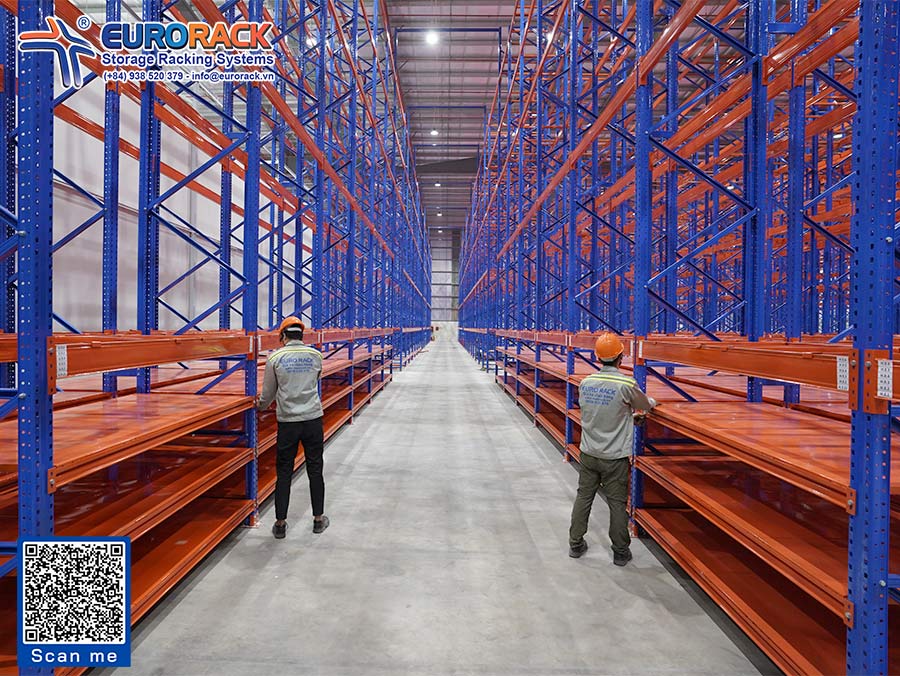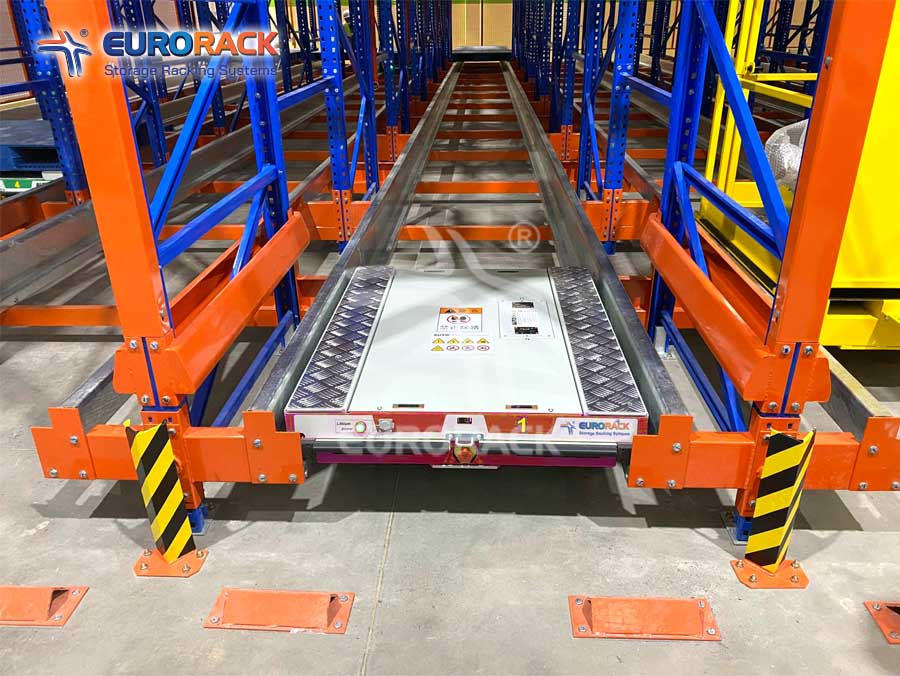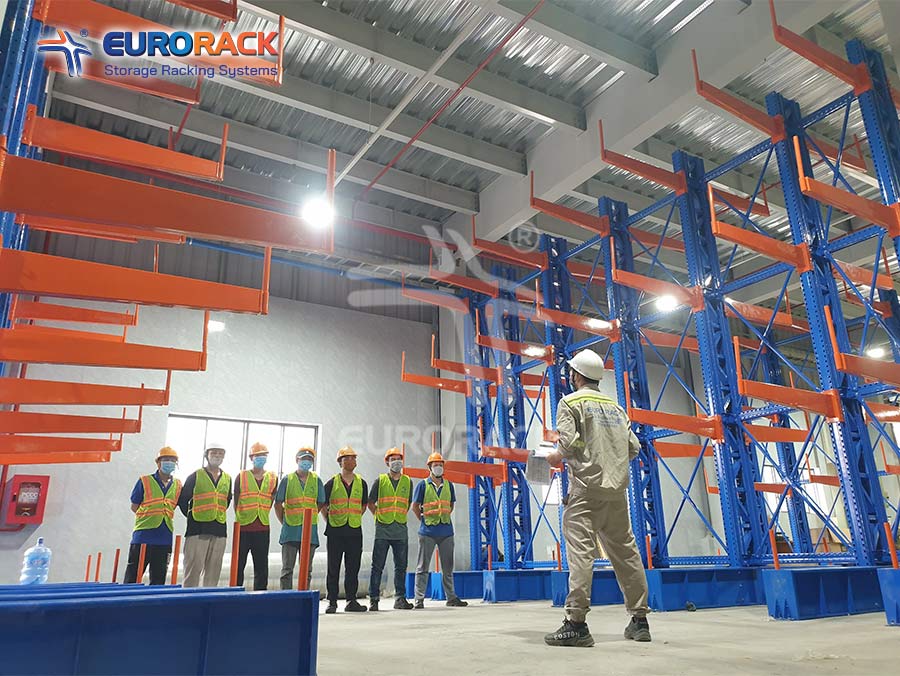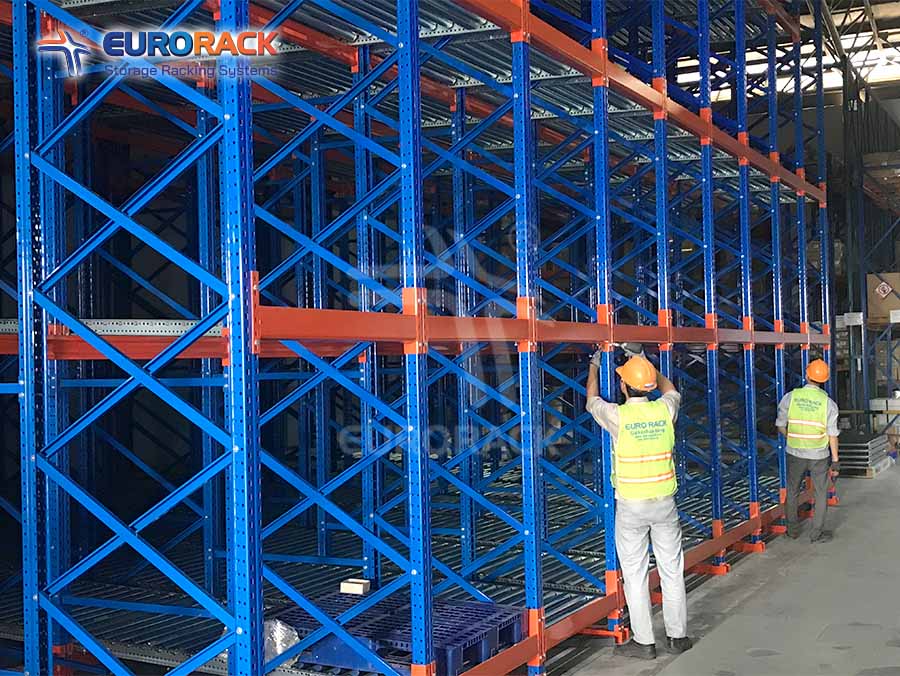- Hotline: (+84) 938 520 379
- Email: info@eurorack.vn

Smart Warehousing A Future Development Trend
A smart warehouse, also known as an automated warehouse, is an advanced storage and inventory management system designed to optimize efficiency in storing and distributing products. It leverages modern technologies such as smart storage devices to automate processes, minimize errors, and enhance productivity. The standout feature of smart warehouses is their ability to automate all aspects of management, transportation, and storage of goods within the facility.
Smart warehouses and traditional warehouses differ significantly in their design, management, and operations.

Smart warehouses differ significantly from traditional warehouses in terms of design, management, and operation.
The following equipment plays crucial roles in the design and operation of a smart warehouse, optimizing the storage and movement of goods.
These are computer-controlled and capable of autonomously performing tasks such as lifting, moving, and stacking goods accurately and efficiently. Automated forklifts help minimize human errors and increase storage productivity.
A technology-integrated smart robot device that can automatically move pallets of goods within the warehouse and swiftly access shelves. They can handle heavy loads up to 2500kg and efficiently optimize storage space. Pallet runners enhance management capabilities and storage efficiency through process memorization.

Automate storage with Eurorack Pallet Runner
Crucial tools for quickly and efficiently transporting and moving goods within the warehouse. They are used to connect points in the storage and distribution process, reducing the time needed to move goods and increasing overall productivity.
In automated warehouses, these are crucial devices used to lift and lower goods from storage positions to meet retrieval demands. Goods lifts optimize the process of picking and placing goods in the warehouse.
It tracks goods in real-time, manages inventory, optimizes goods arrangement, and provides important information about reserve levels or the need for replenishment. This software ensures efficiency and safety in goods management processes.

Using warehouse management software helps businesses assess warehouse status and predict needs.
When designing an effective smart warehouse, several important principles need to be considered to ensure smooth operation.
Using smart storage systems and shelving types is the most effective way to optimize warehouse space efficiently. This is an essential part of warehouse content to construct an automated storage facility.
Ensure safety for employees and equipment in smart warehouses through safety measures such as collision sensors, surveillance cameras, and access control systems. Protect critical data and systems from threats through layers of security locks.
Design the flow of goods movement to minimize travel time and maximize efficiency. Ensure that conveyors and pathways in the warehouse are logically designed to avoid conflicts and congestion.
Divide the warehouse into zones to easily identify the location of goods and facilitate picking and placing orders. Arrange goods based on criteria such as usage frequency or type.
Perform regular inspections and maintenance for automated robots and systems in the warehouse to ensure they operate smoothly and safely. Review repair and maintenance procedures to ensure quick repair readiness to avoid disruptions in the supply chain.
Train employees to use and manage equipment and software in smart warehouses. Ensure they understand how to conduct safety checks and handle emergencies.

Management staff are key factors in operating automated warehouses.
Four common types of shelves used in smart warehouses include:
The shuttle is a specialized storage system designed to optimize warehouse space. This system uses remotely controlled robot devices (Shuttle Robots) to automatically move pallets of goods along the guided rails of the shelves. The load capacity of these robots can reach up to 2500kg with a speed of 65m/min.

Eurorack Radio Shuttle Racking System
This system utilizes robots or movable devices to automatically move, store, and retrieve goods. The automatic feature of ASRS can be used in two forms: fixed and mobile systems, with advantages for operation in high-rise warehouses with multiple levels.
Allows the creation of aisles between shelves when needed and easy closure when there is no requirement for goods unloading. Mobile racks are often used in warehouses with limited space, where optimizing storage space is crucial.
Pallets are placed at one end of the shelf and move using gravity principles. When a pallet is retrieved, the pallet behind it automatically rolls to the empty position. This system is suitable for warehouses with large quantities of homogeneous goods and aims to optimize storage and quick access.

Pallet Flow Racking is an effective warehouse space saving solution in smart warehouses
Eurorack JSC is proud to be a leading provider of smart and automated warehouse solutions with a diverse range of customizable products to meet the specific needs of each customer. With over 13 years of experience and expertise in mechanical engineering, manufacturing, and installation of storage racks, steel pallets, cold storage racks, etc., along with a range of solutions to support the most efficient warehouse operations and goods management.
Large enterprises such as Pepsico, Nestle, Vinamilk, Yamaha, DKSH, Lotte Mart, etc., have already used Eurorack's smart steel rack systems, meeting their strict criteria for quality and rigorous inspection processes.
To what we have achieved and continue to accomplish, stands as a testament to the unwavering trust and the reassurance of Eurorack's quality and reputation. We look forward to partnering with your esteemed business on the journey ahead.
Contact Eurorack if your business needs advice on installing an storage rack system.
-------------------------------------
EURORACK MECHANICAL JSC
Hotline: 0938 520 379
Mail: info@eurorack.vn
Website: eurorack.com.vn
Address: No. 5/3 Doan Thi Diem Street, Ward 1, Phu Nhuan District, HCMC, VietNam
